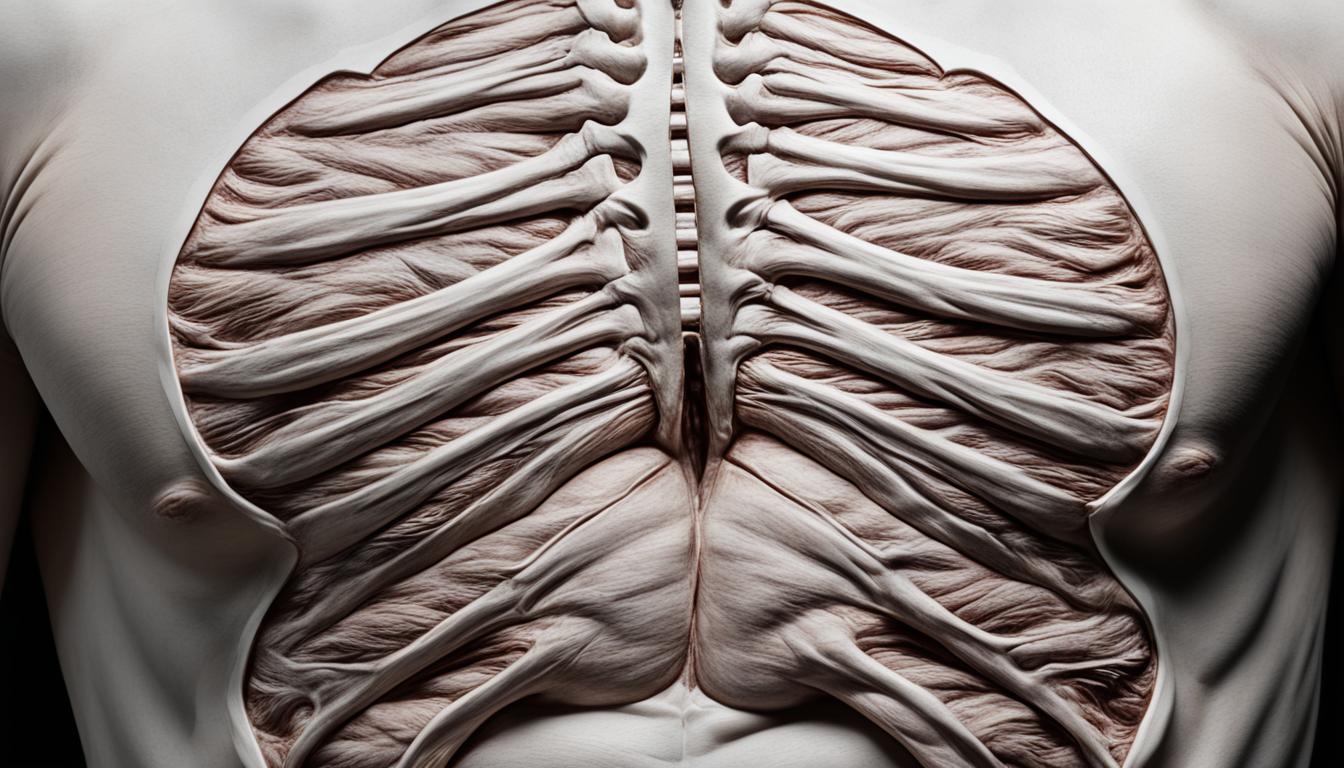Pectus excavatum is a chest wall deformity that looks like a “funnel chest” or “chest wall deformity.” The chest caves in, giving it a sunken look. Around 1 out of 400-1000 children have this, making it common in kids.
The cause of pectus excavatum is not fully understood, but it might be in the genes and can be passed down. This issue appears more in boys. Over time, the shape of the chest might change and become more noticeable.
Children with this condition might feel chest pains, get out of breath easily, or tire quickly when they play because their heart and lungs are crowded. This could really affect how they live and feel every day.
To fix pectus excavatum, surgery is often the best choice and it’s usually done when kids are teenagers. There are two main ways to do this: the traditional Ravitch surgery and the Nuss surgery that’s less invasive. The doctor will pick based on the child’s age and how serious the chest shape is.
Stem cell therapy offers a new way to treat pectus excavatum by using special cells that can turn into different cell types. In Thailand, people can try this as an option if they’re looking for something different than surgery.
Key Takeaways:
- Pectus excavatum causes the chest to look sunken and is common in young people.
- It might make kids feel chest pain, get short of breath, or get tired quickly.
- Surgeries like Ravitch or Nuss are the main ways to fix it.
- Stem cell therapy is also available in Thailand as another treatment choice.
Diagnosis of Pectus Excavatum
Diagnosing Pectus Excavatum means carefully checking the chest wall. Doctors use different tests to see how serious it is. This helps them figure out the best way to treat each person.
Imaging Studies
Tests like CT scans or MRIs are key in finding Pectus Excavatum. They show clearly if there’s a problem with the chest wall. CT scans let doctors see a 3D view, and MRIs focus on soft tissues.
Electrocardiogram and Echocardiography
An ECG checks how the heart is working and spots any heart issues linked to Pectus Excavatum. It can find problems with how the heart is beating. Echocardiography uses sound waves to make heart images, checking for more heart issues.
Pulmonary Function Tests
To test lung power in Pectus Excavatum, doctors do pulmonary tests. These measure how much air you can breathe in and out. It shows if the chest wall issue is affecting how well you can breathe.
| Diagnostic Method | Purpose |
|---|---|
| Imaging Studies (CT, MRI) | Confirm the malformation, assess severity |
| Electrocardiogram (ECG) | Detect cardiac abnormalities |
| Echocardiography | Evaluate cardiac structure and function |
| Pulmonary Function Tests | Assess lung capacity and function |
These tests show how severe the Pectus Excavatum is and any heart or breathing problems. Knowing this helps plan the right treatment steps.
Treatment Options for Pectus Excavatum
When it comes to treating pectus excavatum, the options are numerous. The right choice depends on how bad it is and the patient’s age. The main way to treat it is through surgery. Surgical repair fixes the chest wall shape and can boost how someone feels about themselves.
Ravitch Procedure
The Ravitch procedure is a common surgery for pectus excavatum. It’s also called open repair. Surgeons make cuts in the chest wall and adjust the sternum. The goal is to put the sternum back in its normal place. This surgery is best for severe cases and takes longer to recover from than other options.
Nuss Procedure
The Nuss procedure is less invasive. Surgeons place a metal bar under the sternum. This lifts it up. It’s known for shorter hospital stays and faster recoveries. The Nuss procedure fits well for milder cases, often in teenagers.
For some, there’s a non-surgical choice: the vacuum bell. It’s mainly for kids. This device uses suction to slowly reshape the chest. It can work for mild or moderate cases, potentially avoiding surgery.
Stem cell therapy is also being looked into as a future option. It’s at the early research stage. However, it might become a less invasive way to deal with the chest’s shape problem.
| Treatment Options | Procedure Type |
|---|---|
| Ravitch Procedure | Open Repair |
| Nuss Procedure | Minimally Invasive Repair with Metal Bar |
| Vacuum Bell | Conservative Treatment |
Conclusion
Pectus excavatum is a common chest wall deformity that impacts both the body and mind. It’s often passed down in families but the exact reason isn’t clear. Surgery is the main fix, with procedures like Ravitch or Nuss being very helpful. They make the chest look and work better.
Thanks to modern medicine, people with pectus excavatum have more ways to deal with it. Surgeries can do a lot, making things better look-wise and health-wise. But now, there’s a new hope in using stem cell treatment. This method uses the body’s own repair system to fix the chest wall. While it’s still new, stem cell therapy is a bright spot for the condition’s future.
A mix of surgery and stem cell therapy might offer the best results for those with pectus excavatum. Either way, talking with specialists is crucial before making any decisions. As science keeps moving, there’s a lot of hope for improvements in how we treat and live with this condition.

